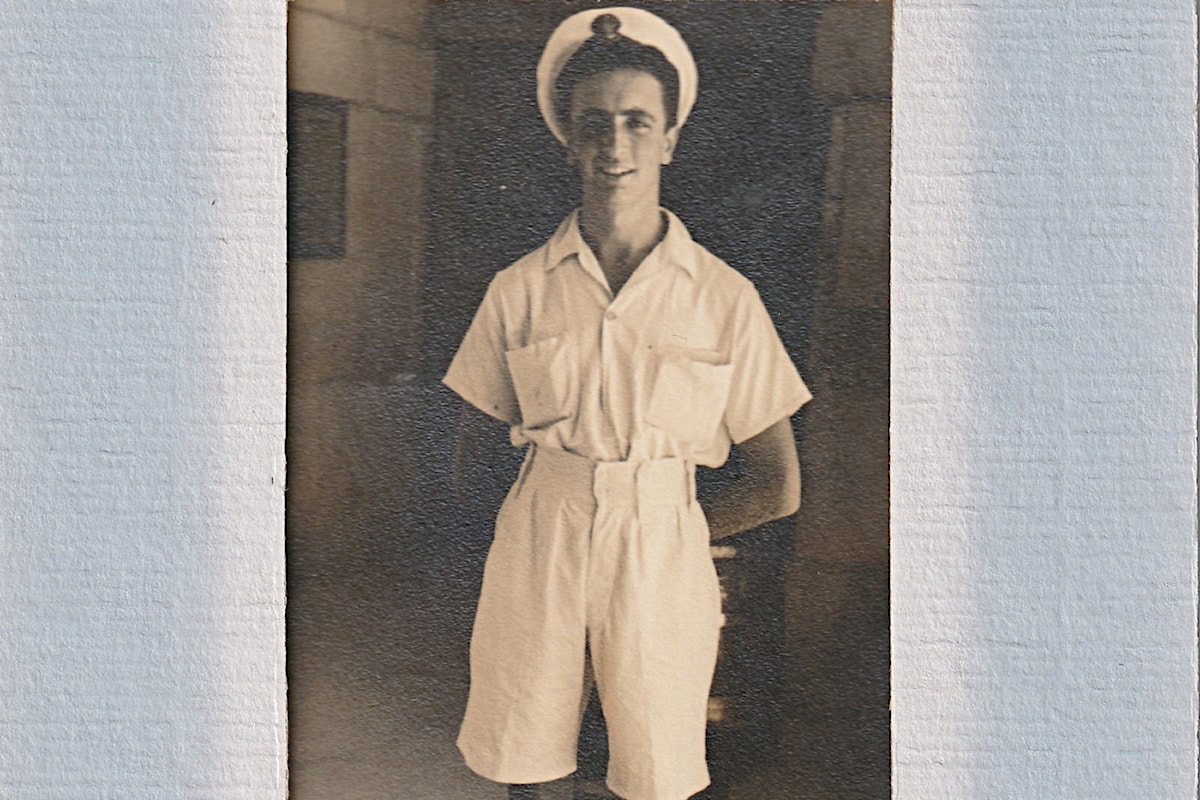Couple paid tribute to two paid tribute to two Neskonlith soldiers killed in Second World War
Royal Canadian Legion members Harry Welton and his partner Sandra Baker observed Remembrance Day in two Mediterranean countries in 2024.
The first stop on their tour was the Commonwealth War Grave in Sicily, where they paid tribute to two Neskonlith soldiers who paid the ultimate price in the Second World War.
The remains of August Soule, who enlisted under the name Saul, and his nephew Charles Leon, are buried in the beautifully kept war grave near the picturesque town of Agira.
Both men enlisted in the Canadian Army at the start of the war and, and after three years of training in England, sailed to Sicily with the First Canadian division in June 1943.
German submarines shadowed the Allied convoy along the Atlantic Ocean and through the Strait of Gibraltar into the western Mediterranean where they attacked the convoy. Three ships were sunk and 58 soldiers and sailors were killed.
Soule and Leon survived and made it to Sicily, but in late July were involved in fierce fighting with the German Army. Both men were killed – Soule was 23 and Leon was 20. They were interred with the bodies of the 562 Canadians who were killed in Sicily.
Welton and Baker next headed to Malta, an island and British Colony that was crucial to the war in the Mediterranean. The most heavily bombed site in the Second World War, the island was almost bombed into oblivion in a two-year battle for its control between the Allies and the German and Italian air force.
Welton and Baker’s tour landed in Malta on the morning of Monday, Nov. 11, 2024, where Harry led a small memorial service in the group’s hotel as the Maltese had observed Remembrance Day just prior to their arrival.
“We were given British and Maltese poppies in a store by a lady who saw my Canadian poppy,” said Harry, who was particularly interested in a tour of the Lascaris War Rooms, an underground complex of tunnels and chambers in Malta’s capital of Valletta.
The British began building the intricate network of tunnels in 1940, expanding them in 1943 to house the Allied headquarters under President Eisenhower. The war rooms became the headquarters for Operation Husky, the 1943 invasion of Sicily.
An online site describes the war rooms as being equipped with cryptographic devices, automatic ventilation and other hi-tech gear that enabled military personnel to collect information and coordinate actions of their military units at the drop of a hat.
The rooms were later used by NATO and are now open to the public as a museum whose dim tunnels and operations rooms have been beautifully reconstructed to create an authentic wartime atmosphere.
Welton was surprised by how small the space was, with the maps on walls detailing the 300 bombing sites pilots were involved in.
He said the best thing about being in the war rooms was talking about the Canadian pilots, who conducted countless bombing and attack missions against Axis targets throughout the Mediterranean, particularly those in Sicily, North Africa, and on supply lines. Key bombing campaigns from Malta included attacks on enemy shipping and support for ground operations during the invasion of Sicily,
Welton said several Canadian pilots who flew out of Malta became aces, including George Frederick “Buzz” Beurling, who was the most successful Canadian fighter pilot and flying ace of the Second World War, having been credited with shooting down 27 Axis aircraft in just 14 days over the besieged Mediterranean island. “Our tour guide knew we were Canadians so he made sure we got all the information,” noted Welton.
While in Malta, he paid tribute to fellow legion member Lawrence Williams whose brother Lennard was a member of Royal Air Force Squadron #272 and flew some 30 missions out of the RAF Base in Malta.
In 1944, 22-year-old Lennard was transferred to Shaluffa Station in Egypt as co-commander. While training a student on Nov. 22, 1944, his Harvard Trainer went down in the Red Sea. Lennard’s body was never found.
His name is inscribed on the El Alamein Memorial in Egypt, which lists the names of 213 Royal Canadian Air Force (RCAF) members who died in North Africa, the Middle East, the Aegean, and East Africa but have no known grave.
It is part of the El Alamein War Cemetery and commemorates over 11,000 Commonwealth forces with no known grave, with the Canadian names inscribed on dedicated panels.
The visit to Malta was an emotional one for Baker whose father Gordon Baker, who served on a minesweeper in the Mediterranean.
Baker was able to visit the spot where her father’s photo was taken in April 1945, just weeks before Victory in Europe was declared on May 8.
This year, Welton and Baker will honour the fallen at the new Celista cenotaph located at the North Shuswap Community Hall.
As always, Welton will also pay tribute to a great uncle John Brayley who died in the First World War.
His body was never found but his name is inscribed on the Menin Gate, a memorial to the fallen in Ypres, Belgium.
Also on his mind will be uncles who fought in the Second World War, Malcolm Matheson who died on Nov.11, 1942 while on convoy duty in England, and Harry Ward, who survived but was paralyzed from the waist down
